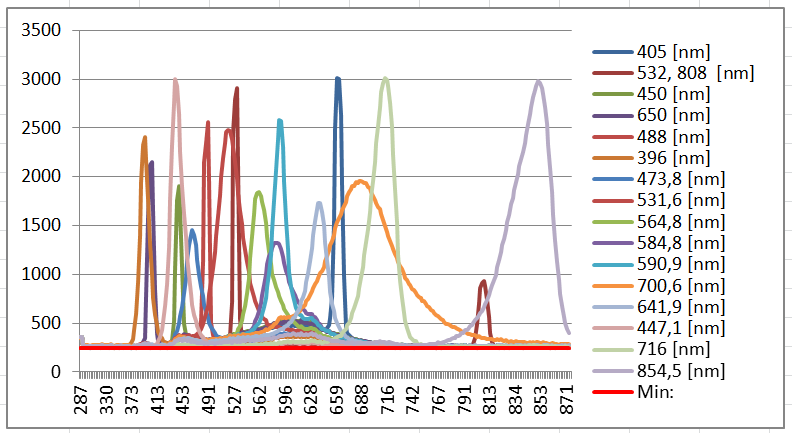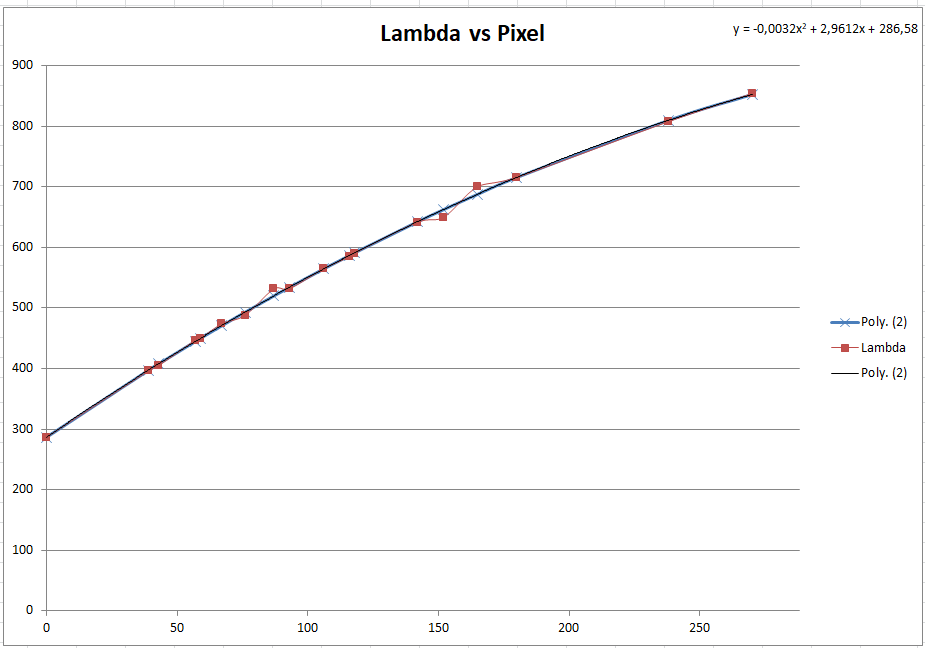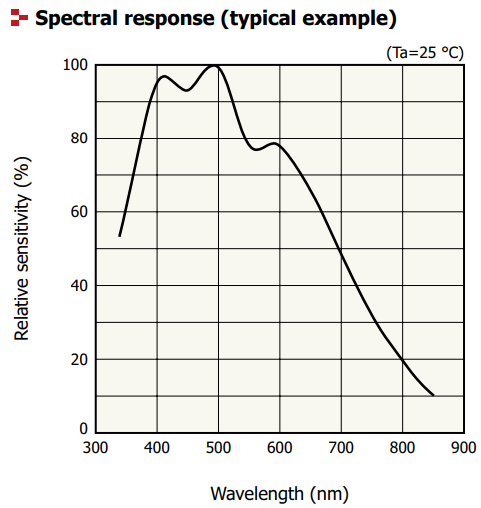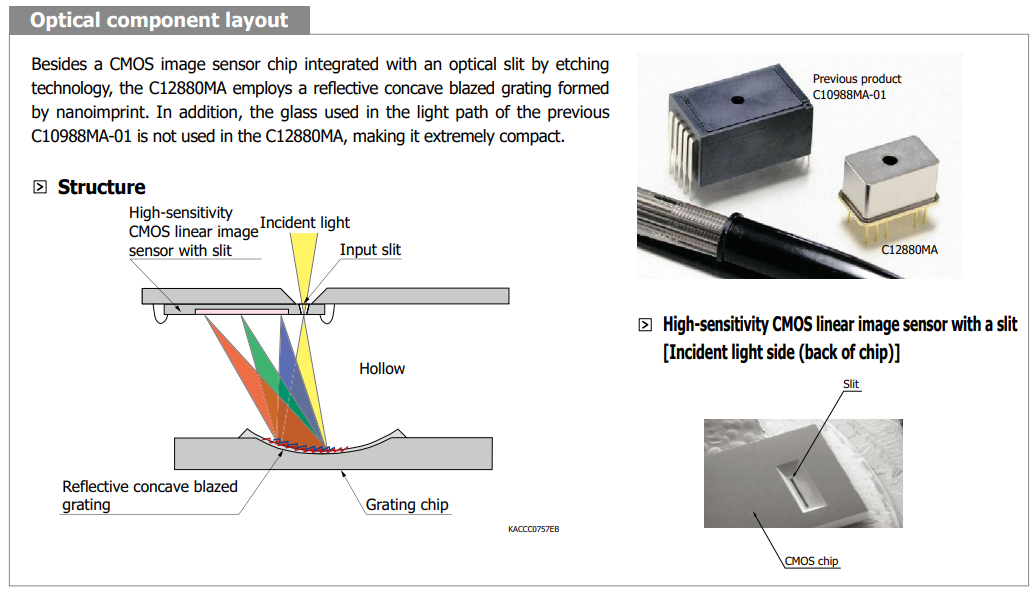288 Ch. Spectrometer (C12880MA)
The C12880MA is a compact spectrometer from Hamamatsu. It has 288 channels and is sensitive in the range of 350-850* [nm]. My own calibration routine showed the range is a bit wider than expected (*290 - 874 [nm]). By taking measurements of good known LED's and their peak emitting wavelength i could check what pixel of the detector gets 'hit'. After linerarizeing the wavelengths and numbers of pixel the measurements are WL calibrated. Hamamatsu provides a calibration sheet with each detector, but i needed to be sure and i wanted to go through that procedure myself. In the end my calibration polynom is: y = -0,0032x² + 2,9612x + 286,58 Hamamatsus is: y = -0,00129x² + 2,72 + 299 (x³, x^4, x^5 not shown)


Absolute values for the acquired signals of each wavelength could be calculated too. By given spectral sensitivity of the material system of the detector a first step would be to normalize all signals through the signals [nm].

Then a known source with constant emissions could help to get absolute values in [W/m²]. The [m²] is not normalized because the detector area is a tiny slit [50 x 500 µm = 2,5 x E-8 m²]. To normalize to [1 m²] just devide the signal strength with the detector area. ... but that is still on my todo list.

The integration time (or time of collecting photons) of the detector is a variable that you can tune with your code and this is one intriguing part of that sensor. If a signal is too strong the detector get over saturated, so i re-set the integration time automatically if the signal reached 2/3 of the maximum value. Integration time is getting higher for weak signal or lower for strong signal i.e. dimm light or bright light. The minimum integration time is 180 µs and the max. is 20 ms. For really dimm light i still investigate how to rise the max. int. time to 0.5 or even 1 second to get the most out of it.

Measuring Transmission Coefficient:
To measure a transmission coefficient you'll need a light and something translucent to acquire the t. coefficient from.
My approach is to measure any light source, check for suitable wavelength dependent light flux and normalize the signal to 100%. Hold anything between light source and detector and you'll get the % of light passing through an object in the detectors sensible wavelength range. In my test i use a white LED and a white Halogen lamp. The halogen lamp shows much more NIR signal due to common black body radiation. The white LED only emits in the VIS range. If the light signal is to weak i plot them as black bars to show that this range is unsuitable for the t. coeff. measurement.
After the reference measurement is taken (the light source without anything in between) the integration time of the detector is set to a fixed time.
ToDo's: -plot a 100% line -touch a wavelength and get exact % t.coeff. of that wl
 j
j
Discussions
Become a Hackaday.io Member
Create an account to leave a comment. Already have an account? Log In.